The Rabbit Who Hunts Tigers
About
We are pleased to present The Rabbit Who Hunts Tigers the first solo show of the artist Lian Zhang (1984, Hangzhou) at the gallery.
Zhang creates powerful, emotional landscapes that transport the viewer to another time and place. Her nostalgic, illusory scenes incorporate autobiographical fragments alongside references to Eastern and Western mythology, folklore, art, history, and popular culture. Each composition dwells on contradictions that blend past and future, good and evil, myth and reality, tragedy and comedy, and hints at multifaceted narratives that strain in many different directions at once. Her works draw from Surrealism, Symbolism, Taoist philosophy, and her personal experience living in London as an immigrant.
Executed with a vivid color palette and filled with the energy of both stasis and motion, her paintings embody a fluidity between objects and figures. Zhang aspires to achieve a form of soft power via delicate, flowing, water‑like brushstrokes that interlace disparate elements across the surface of the canvas.
“I always imagine that my hands become water; they travel freely when moving here to there in a painting.”
– Lian Zhang
Water – formless, shapeless, and adaptable – is an important component of Zhang’s work and a great source of inspiration. In that regard, she refers to Bruce Lee’s metaphor about water, quoted in Yin Yin’s album The Rabbit that Hunts Tigers, which gives its title to the exhibition.
While many of Zhang’s previous paintings were about exploring the experience of living abroad, this new body of works is about returning to an estranged homeland and confronting one’s deepest fear by ripping off the old wounds. They are based on the idea that life is impermanent, but one should never stop battling with inner demons and fight for a better future. The exhibition features ten paintings, three of which are large‑scale atmospheric, dreamlike scenes. The other seven are uncanny portraits of female hybrid characters defying the viewer with their intense gaze.
The large work Tiger’s Den challenges the conventional storyline of predators and preys and reminds us that those presented as the perfect embodiment of strength and evil are, first and foremost, animals. Indeed, the demons we are afraid to face are always inside us. We are also reminded of this through All of our waves are water that depicts a tidal viewing ceremony of the Qian Tang River, which the artist could witness from her balcony.
“My studio was on the 24th floor, I saw so many tiny humans standing on the shore the whole afternoon just to see the waves which pulled by the gravitation of the moon goddess.”
– Lian Zhang.
This piece takes this event further, to when everything gets out of control and the moon goddess stands on the water and fights her way out by cutting waves with her warping swords to kill the beast that blocks her way.
The Invasion, semi‑autobiographical in a surrealist way, depicts a time when both the inner life and outer world are floating, leading to a plot that repeatedly happens in a distorted, dreamlike labyrinth inspired by reality.
Her ongoing series of female portraits explores Asian female identity, while highlighting and undermining some of the ways in which Asian women are stereotyped and objectified. Ambush is based on Anna May Wong, the first Chinese American actress to gain international recognition, but is yet mostly remembered for her stereotypical supporting roles as “Dragon Lady”. Huntress, Bystander, Tropical Sun and The Silent One are inspired by vintage posters in which the main protagonists were objects of male gaze. By giving these models a peculiar twist, Zhang makes them gaze back at the viewer with their monster eyes and unconventional expressions. Cry of a Friend and The Archer explore the symbol of rebellion and satisfy our thirst for freedom.
I said empty your mind
Be formless
Shapeless
Like water
Have you put water into a cup?
It becomes the cup
You put water into a bottle, it becomes the bottle
You put it in a teapot, it becomes the teapot
Now water can flow or it can crash
Be water, my friend
– Bruce Lee, quoted by Yin Yin, in “One Inch Punch” – The Rabbit That Hunts Tigers, 2019
Lian Zhang, The Silent One, 2023
Oil on canvas, 80 x 60 cm (31.4 x 23.6 in.)
Lian Zhang, Bystander, 2023
Oil on canvas, 90 x 70 cm (35.4 x 27.5 in.)


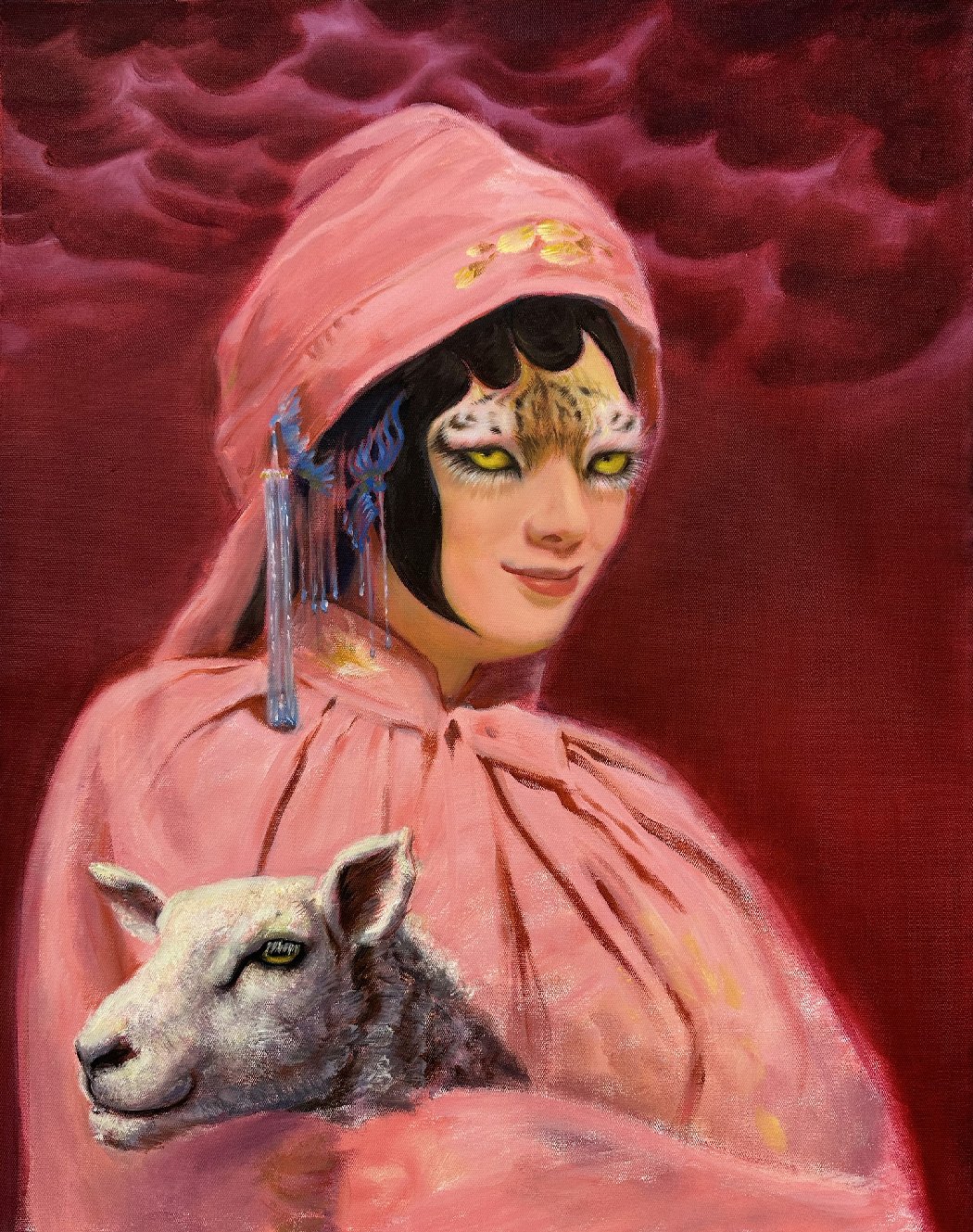







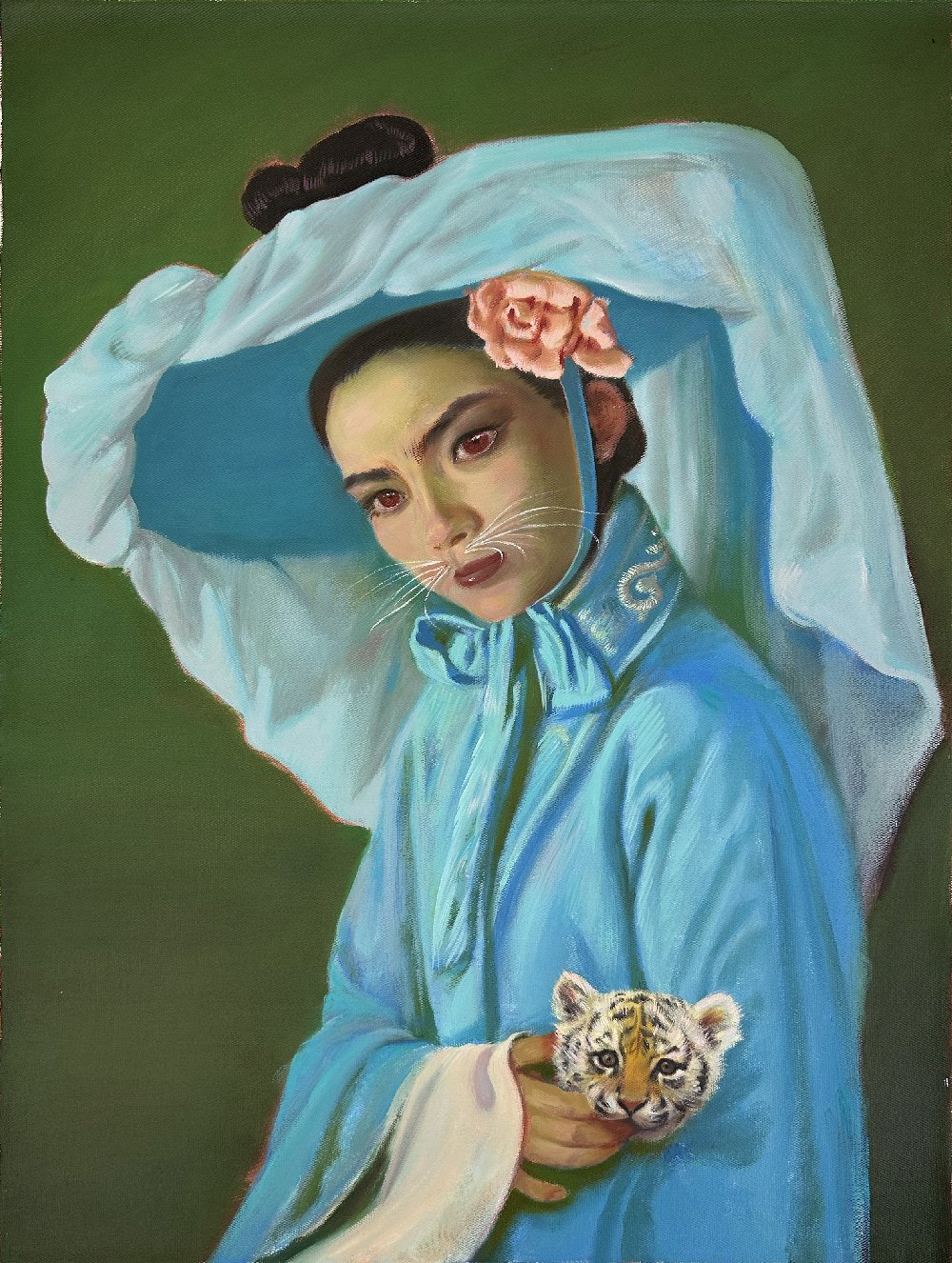
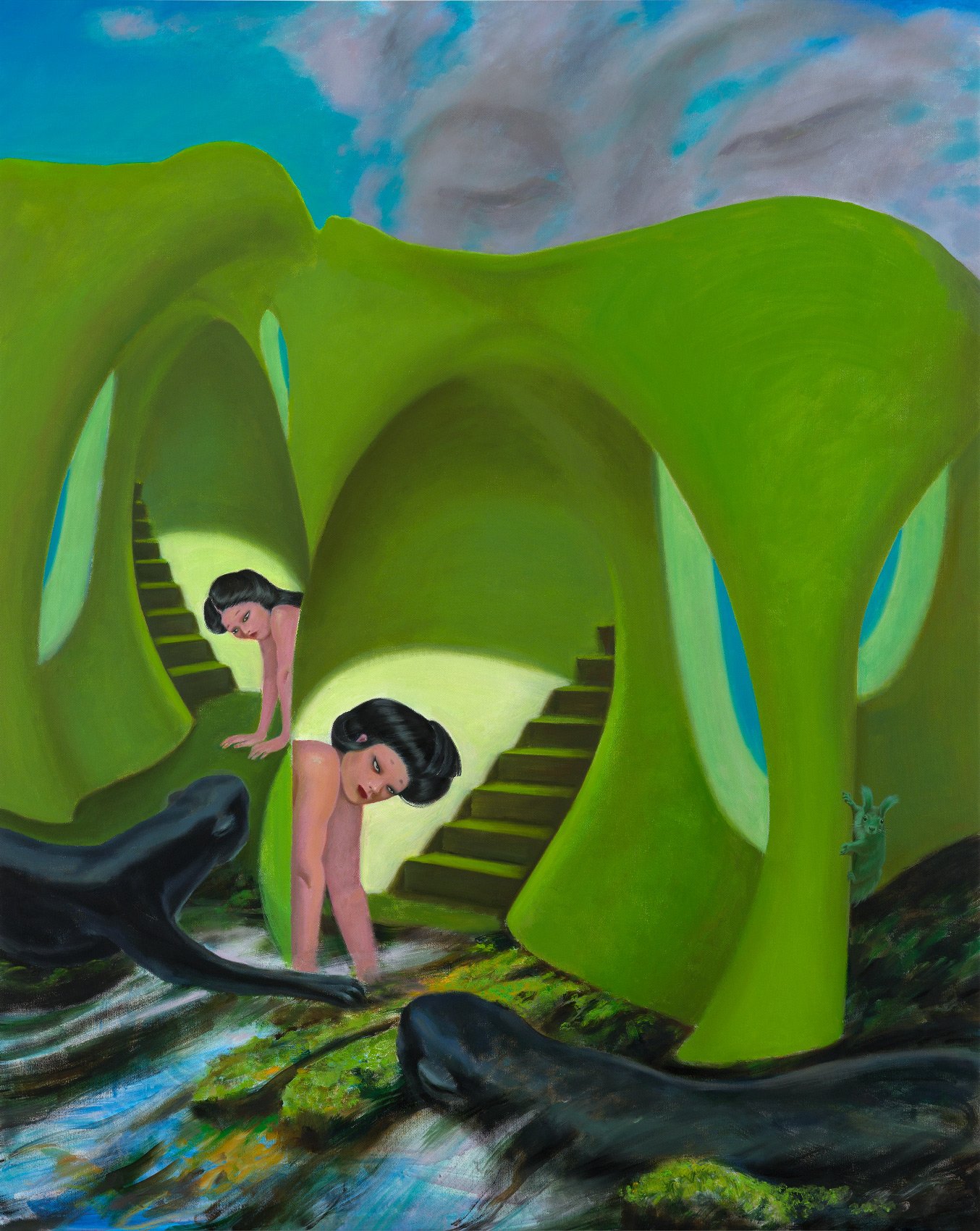




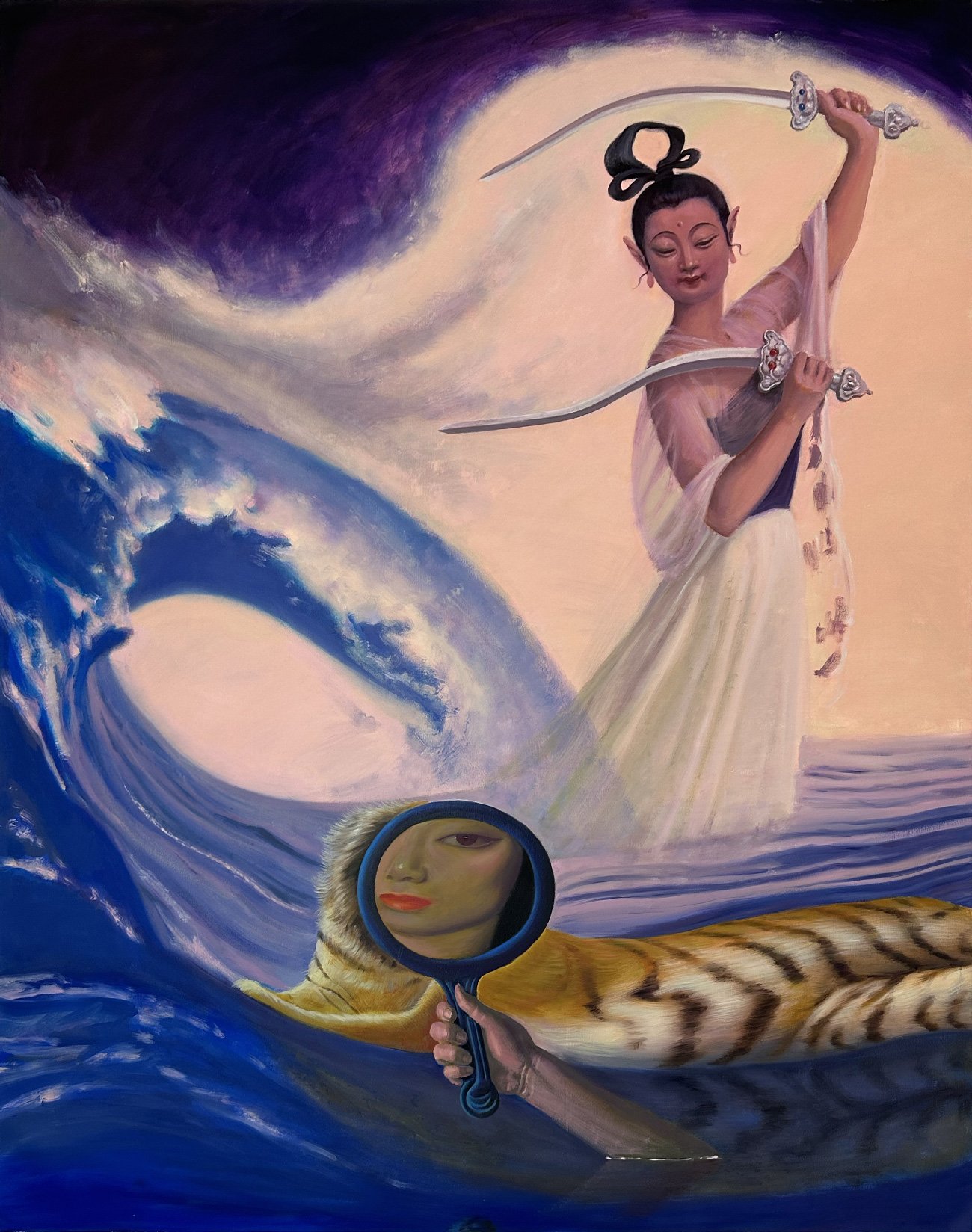
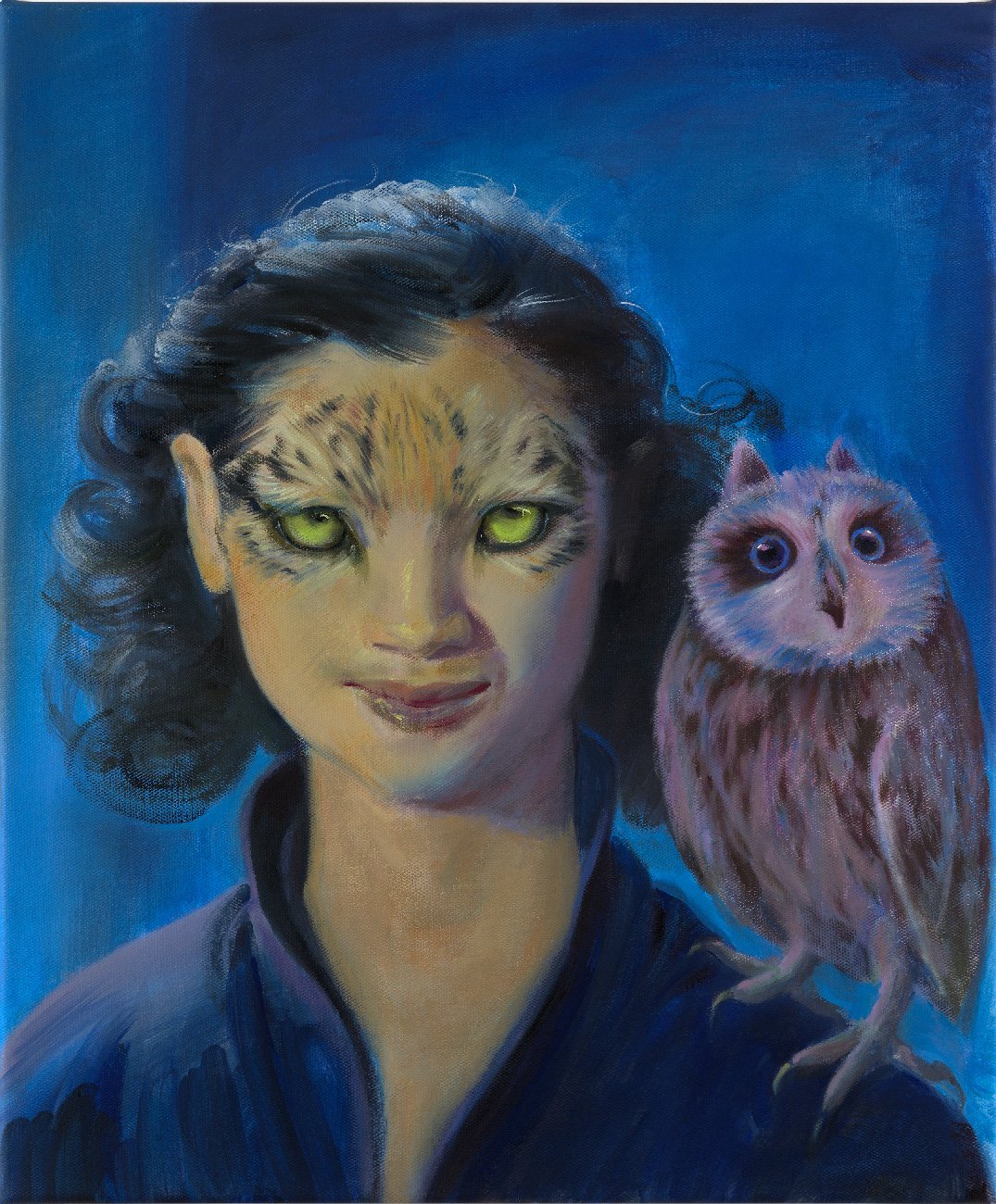
2022
Oil on canvas
80 x 60 cm / 31.4 x 23.6 in.